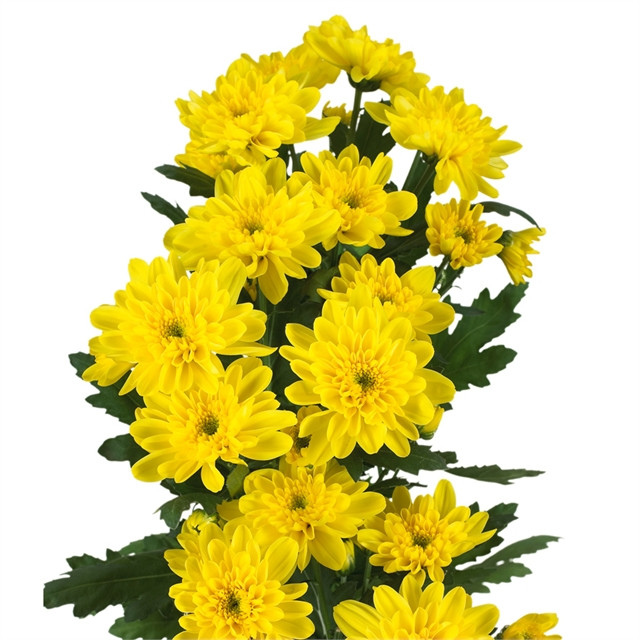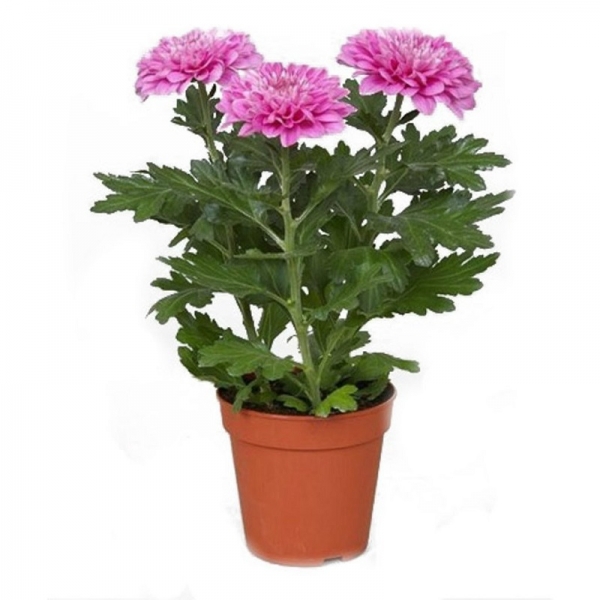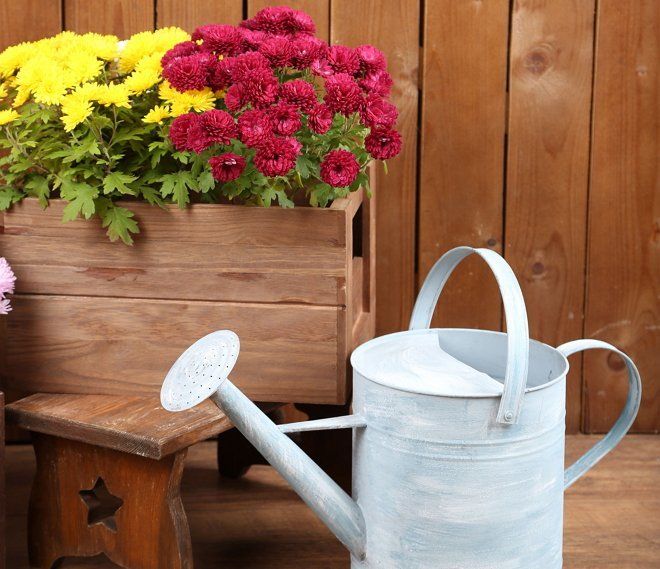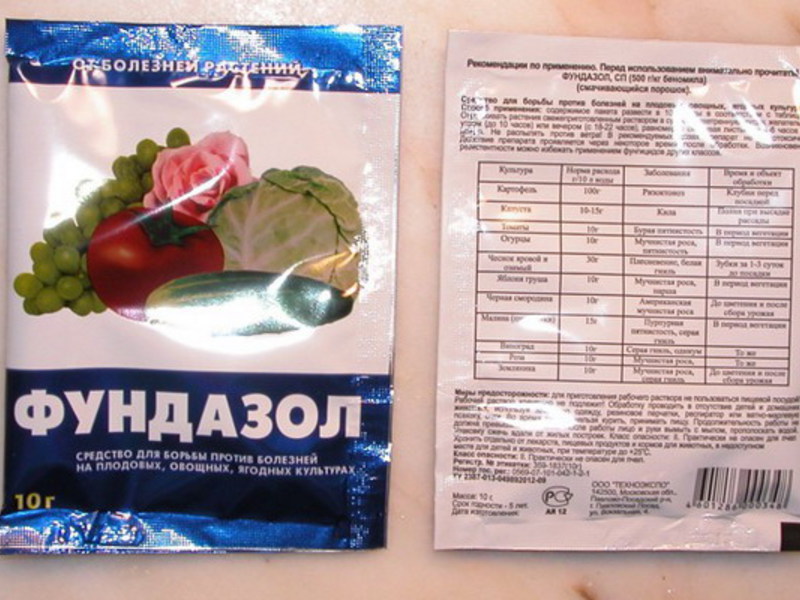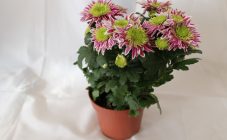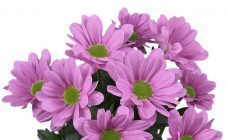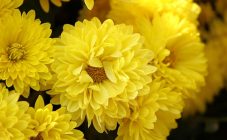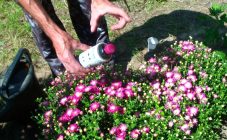It is difficult to find a site that would not be decorated with such a beautiful and vibrant plant as a chrysanthemum. One of its unusual varieties is Zembla. Southeast Asia is considered the homeland of this flower. Many growers cultivate it as a houseplant. The Zembla chrysanthemum gained popularity among gardeners due not only to its beauty, but also to its unpretentious care.
Description of culture
The plant is a perennial, but is grown as an annual bush flower. It is used to decorate alpine slides, flower beds, flower beds, window sills and balconies.
Chrysanthemum bush Zembla grown in the open field, can reach a height of 100 cm.If it is grown as a pot plant, the height can fluctuate within 11 - 25 cm.
On one stem there are up to 3 flowers, the reed petals of which are collected in a rosette inflorescence. The diameter of each flower can be from 25 (when grown in the garden) to 12 cm (when the plant is growing in a pot). You can find flowers of completely different colors, which give off a pleasant scent of honey.
The root system of the scourer type is close to the soil surface. On the stems there are feathery, trifoliate, dark green leaves, the upper plate of which is covered with a delicate nap.
When cultivated in garden conditions, the single-headed Zembla chrysanthemum enters the flowering phase from mid-September. It continues until the onset of stable frosts.
Plant varieties
Often the prefix "mix" is used along with the name of this beautiful flower. The reason for this is that a large number of subspecies of the Zembla chrysanthemum are known. Among the most common among gardeners are the following:
- Lilak is a large-flowered plant, the inflorescences of which have wide pink petals. Its height reaches 90 - 100 cm. It has the ability to winter in the open field.
- White. It is also known as Zembla White chrysanthemum. Large white flowers are formed on the stem, the middle of which is painted in a pale light green color. The stems of the plant are strong and erect.
- Yellow. It belongs to the early species. Yellow inflorescences grow on the stems, the diameter of which reaches 25 cm. The flowering period of the yellow chrysanthemum falls at the beginning of autumn.
- Lime is considered a bush flower. Its petals are lime green. Reacts poorly to frost.
- Vip. The flower forms small bushes on which up to 8 lilac-purple flowers develop.
- Purple has a long flowering period. The bush is decorated with pink flowers of large diameter.
- Pink. On the stems, large inflorescences flaunt, which are distinguished by a pale pink tint. Cut buds retain their beauty and freshness for 30 - 50 days.
Growing conditions and care
Chrysanthemum Zembla refers to light-loving plants that love warmth. If you do not provide the flower with sufficient light, the shoots will quickly stretch out and the flowering period will be very short. It is possible that a plant that is in a poorly lit place will not bloom at all.
Timely and abundant flowering occurs only if the soil under the plant is always moist. With overflows, the root system may begin to rot, as a result of which the flower will disappear.If the chrysanthemum is grown in a pot, there is a need for a functional drainage system.
So that the soil does not dry out for a long time, experienced flower growers mulch it. For this, sawdust or dry grass are used.
To grow chrysanthemum Zembla, you must first prepare the soil. It should include peat, river sand and sod-deciduous land. To ensure water permeability and good aeration of the soil, it is recommended to add fine brick chips to it.
Abundant flowering can be achieved provided that the soil is fed on time. During the period of active spring growth, mainly mineral fertilizers are used as it. When the plant forms buds and blooms, it is better to use nitrogen and potassium supplements.
To form young shoots, the plant must be pinched. Inflorescences that have already bloomed are removed. You also need to make sure that there are no dry leaves on the bush. Undercutting the top of the bush promotes rapid growth. If you remove the first bud, you can get larger inflorescences later.
Homemade chrysanthemums in pots in warm weather can be taken outside, but not in direct sunlight. This can provoke drying of the leaves, wilting of buds and inflorescences.
After the plant has bloomed, the bush is cut at the root. For the winter, the chrysanthemum should be placed in a room where the air temperature does not exceed 10 ° C. Thanks to this, the flower will have the strength to form new stems and peduncles.
In the spring, a plant with young stems and leaves is transplanted into a new soil. This procedure is carried out annually for the first 5 years. After this time, the transplant is carried out once every 2 years.
Alternatively, you can transplant the garden chrysanthemum into a pot with the onset of cold weather and bring it home. For a long time, she will delight everyone with her beautiful flowers.
Chrysanthemum Zembla can be propagated in several ways:
- cuttings;
- dividing the bush.
The grafting method of reproduction is considered the simplest and most effective. To do this, it is enough to take a twig from a bush or bouquet and plant it in the soil to a depth of 1, 5 - 2 cm. It is better to cover the stalk planted in this way with a transparent jar. With proper watering and lighting, in a few weeks young leaves will appear on it, and the root system will begin to actively develop.
If the choice fell on reproduction by dividing the bush, for this the plant must be dug up and divided into several parts. Each of them is transplanted to a new location. This procedure is best done in early spring. In the same year, you can expect the appearance of peduncles.
Pests and diseases
Chrysanthemum Zembla is susceptible to infection with fungal and viral diseases. Among the most common are the following:
- Viral (mosaic, aspermia, dwarfism). The characteristic signs of diseases are that the leaf blades are covered with small brown spots, and the leaves themselves dry and fall off, often the size of the inflorescences can be very small. The cause of these ailments can be poor ventilation of the room, too much watering. To combat viral diseases, it is recommended to remove the affected areas of the stems and leaves, and spray the bush with a solution of foundationol or copper oxychloride.
- Fungal (gray mold, powdery mildew, spotting). With the development of these diseases, the plant grows slowly, it may stop flowering, the leaves become covered with white bloom or dark spots.Among the main reasons that provoke the development of fungal diseases in chrysanthemums, one can single out the incorrectly chosen watering regime and non-compliance with the rules for transplanting bushes. To combat the disease of this type of plant, it is recommended to spray it with Bordeaux liquid or colloidal sulfur.
As for the pests that threaten the Zembla chrysanthemum, the most dangerous of them are thrips and red spider mites, which spread on the stem and leaves, sucking out the plant sap. To destroy them, you can use the insecticide spraying method.
Proper care will extend the period during which the Zembla chrysanthemum will delight everyone with its beautiful and amazing flowers.

